- Home
- W. Somerset Maugham
Cakes and Ale
Cakes and Ale Read online
W. SOMERSET MAUGHAM
Cakes and Ale
WITH AN INTRODUCTION BY
Nicholas Shakespeare
VINTAGE BOOKS
London
CONTENTS
Cover
Title
Contents
Copyright
About the Author
Also by W Somerset Maugham
Introduction
Author’s Preface
Chapter 1
Chapter 2
Chapter 3
Chapter 4
Chapter 5
Chapter 6
Chapter 7
Chapter 8
Chapter 9
Chapter 10
Chapter 11
Chapter 12
Chapter 13
Chapter 14
Chapter 15
Chapter 16
Chapter 17
Chapter 18
Chapter 19
Chapter 20
Chapter 21
Chapter 22
Chapter 23
Chapter 24
Chapter 25
Chapter 26
The History of Vintage
This eBook is copyright material and must not be copied, reproduced, transferred, distributed, leased, licensed or publicly performed or used in any way except as specifically permitted in writing by the publishers, as allowed under the terms and conditions under which it was purchased or as strictly permitted by applicable copyright law. Any unauthorised distribution or use of this text may be a direct infringement of the author’s and publisher’s rights and those responsible may be liable in law accordingly.
Version 1.0
Epub ISBN 9781409077862
www.randomhouse.co.uk
Published by Vintage 2000
14 16 18 20 19 17 15 13
Copyright © the Royal Literary Fund
Introduction copyright © Nicholas Shakespeare 2009
W. Somerset Maugham has asserted his right under the Copyright, Designs and Patents Act 1988 to be identified as the author of this work
This book is sold subject to the condition that it shall not, by way of trade or otherwise, be lent, resold, hired out, or otherwise circulated without the publisher’s prior consent in any form of binding or cover other than that in which it is published and without a similar condition, including this condition, being imposed on the subsequent purchaser
Extract on p.xviii of Nicholas Shakespeare’s introduction is taken from Somerset Maugham: A Life by Jeffrey Meyers, Knopf 2005
First published in Great Britain by William Heinemann in 1930
Vintage Random House, 20 Vauxhall Bridge Road, London SW1V 2SA
www.vintage-classics.info
Addresses for companies within The Random House Group Limited can be found at: www.randomhouse.co.uk/offices.htm
The Random House Group Limited Reg. No. 954009
A CIP catalogue record for this book is available from the British Library
ISBN 9780099282778
The Random House Group Limited supports The Forest Stewardship Council (FSC), the leading international forest certification organisation. All our titles that are printed on Greenpeace approved FSC certified paper carry the FSC logo. Our paper procurement policy can be found at: www.rbooks.co.uk/environment
Printed and bound in Great Britain by CPI Cox & Wyman, Reading RG1 8EX
CAKES AND ALE
William Somerset Maugham was born in 1874 and lived in Paris until he was ten. He was educated at King’s School, Canterbury, and at Heidelberg University. He spent some time at St. Thomas’ Hospital with the idea of practising medicine, but the success of his first novel, Liza of Lambeth, published in 1897, won him over to letters. Of Human Bondage, the first of his masterpieces, came out in 1915, and with the publication in 1919 of The Moon and Sixpence his reputation as a novelist was established. At the same time his fame as a successful playwright and short story writer was being consolidated with acclaimed productions of various plays and the publication of The Trembling of a Leaf, subtitled Little Stories of the South Sea Islands, in 1921, which was followed by seven more collections. His other works include travel books, essays, criticism and the autobiographical The Summing Up and A Writer’s Notebook.
In 1927 Somerset Maugham settled in the South of France and lived there until his death in 1965
OTHER WORKS BY W. SOMERSET MAUGHAM
Novels
The Razor’s Edge
Of Human Bondage
The Moon and Sixpence
The Narrow Corner
The Merry-Go-Round
The Painted Veil
Catalina
Up at the Villa
Mrs Craddock
The Casuarina Tree
Christmas Holiday
Liza of Lambeth
The Magician
Theatre
Then and Now
Collected Short Stories
Collected Short Stories Vol. 1
Collected Short Stories Vol. 2
Collected Short Stories Vol. 3
Collected Short Stories Vol. 4
Short Stories
Far Eastern Tales
More Far Eastern
Tales Ashenden
Travel Writing
On a Chinese Screen
Don Fernando
The Gentleman in the Parlour
Literary Criticism
Ten Novels and their Authors
Points of View
The Vagrant Mood
Autobiography
The Summing Up
A Writer’s Notebook
Introduction
‘You’re queer fish, you writers.’
Rosie Driffield
‘It’s very hard to be a gentleman and a writer.’
Willie Ashenden
‘I have never felt entirely myself,’ wrote Maugham, ‘till I had put at least the Channel between my native country and me.’ Cakes and Ale; or The Skeleton in the Cupboard was the first book that he completed at the Villa Mauresque on Cap Ferrat where he had gone to live in June 1927. Maugham believed that ‘it is the impressions of a man’s first twenty years which form him’, and at the age of 53 - and extracted from his turbulent marriage to Syrie Wellcome – he had chosen to look back at his boyhood on the Kentish coast and at his early adulthood as a medical student in London. Distant in time and space from its material, the composition of the novel, which was to become his favourite book, was unexpectedly pleasurable and easy. He finished the manuscript in July 1929, four months after his divorce, and it was published on 29 September, 1930, causing an immediate furore.
* * *
Two years before, in January 1928, Thomas Hardy had died at the age of 87, his last words ‘Em! Em!’ suggesting that his mind was reeling back to his first wife, Emma Gifford. There followed a grisly tussle between what Hardy had wished for himself – to be buried alongside Emma in Stinsford churchyard – and what his grandiose and pushy trustee Sydney Cockerell wished on behalf the nation – viz. a state funeral in London. On the evening of 13 January, the impasse was resolved when the local surgeon cut out Hardy’s heart, wrapped it in a towel and put it in a cake tin. The tin was kept for safekeeping overnight in the vicarage, where a cat was rumoured to have knocked it off the mantelpiece and devoured the contents. (The embarrassed vicar, so the rumours continued, in pressing need of something to bury, summoned the foreman from the neighbouring farm, who shot the cat and opened up its stomach to retrieve what had been swallowed). Meanwhile, the rest of Hardy’s body was reduced to ashes, patted into an urn and escorted with solemn pomp into Westminster Abbey. The pallbearers included Prime Minister Stanley Baldwin and seven of the Edwardian age’s most esteemed writers – Rudyard Kipling, A.E.
Housman, George Bernard Shaw, James Barrie, John Galsworthy and Edmund Gosse. Maugham, who cared little for Hardy’s writing, confessed that it was the grandiosity of this humble-born author’s funeral – there was in addition talk of erecting a seventy-foot column as a Hardy Memorial – which seeded in him the theme of a novel around which to wrap his youthful memories: a satire of the London literary world, and in particular of the relationship, if any, between a writer’s reputation and a writer’s worth.
Than William Somerset Maugham no one had a beadier eye for how the lion of one generation becomes the skin-rug of the next. His novel is a ruthless send-up of the perishability of fame, and of the way in which the homage conferred on the vast majority of artists withers to oblivion on the instant of their death. Just like Willie Ashenden, the narrator he based on himself, Willie Maugham believed that humankind is but ‘the ephemeral inhabitant of an insignificant planet’. The unimpressionable Ashenden is pleased to tell us that ‘of all the painters, writers and musicians I met at the Driffields, I can’t remember one whose reputation has endured.’ Of the society painter that Maugham modelled on his friend Sir Gerald Kelly, to whom he had dedicated his short-story collection Ashenden but two years earlier – ‘I could find no one who had ever heard of him.’ Of the pompous critic modelled on Hardy’s pallbearer Edmund Gosse – ‘Though now completely forgotten, in those days he was the best-known critic in England.’ As for Maugham’s central character, the preeminent novelist Edward Driffield – the qualities which had made Driffield ‘one of the glories of English literature’ had nothing to do with his prose style; rather, to the managerial exertions of his wife and one or two other lion-hunters, and to the simple fact that he had lived so long. Forget talent, Maugham winks at us, exactly as Driffield over his diningroom table had winked at Ashenden: ‘Longevity is genius.’
‘Trampling on Thomas Hardy’s Grave’ and ‘Hitting Below the Shroud’ were two of the newspaper headlines to greet Cakes and Ale on publication. ‘The career of Driffield is peppered with resemblances to the career of Hardy,’ complained the Daily Express. It was a charge hard to ignore. Both these Grand Old Men of English Letters were – like Maugham himself – physically small; grew up in rural poverty in the south of England; shared a passion for architecture and pubs; suffered the banning of a book for a scene that involved the death of a child; received the Order of Merit and the agitation of their admirers for a Westminster Abbey burial; and in later years eschewed the use of a bathroom. J.B. Priestley knew both the author of Cakes and Ale and also his widely-suspected subject: ‘If Maugham did not intend his readers to be reminded of Hardy, then he acted with strange stupidity, (and a less stupid man than Somerset Maugham never set pen to paper).’
In public, at least, Maugham always denied that he had Hardy in mind – indeed, had met him only once, at a dinner party before the First World War, and chatted to him for 45 minutes, after which Hardy had asked him what he did. In point of fact, I founded Edward Driffield on an obscure writer who settled with his wife and children in the small town of Whitstable of which my uncle and guardian was vicar. I do not remember his name. I don’t think he ever came to anything … He was the first author I ever met.’ This was pure invention. In the circles that Maugham was writing about, it rang as tinnily as Charles Dickens’s protest that he had not in Bleak House cruelly caricatured the journalist Leigh Hunt in the grasping character of Horace Skimpole. What no one could overlook was the chief point of similarity between Hardy and Driffield: each had married a much younger second wife who acted as over-vigilant priestess to his shrine.
Maugham never visited Thomas and Florence Hardy at Max Gate in Dorchester. His likeliest source of information was the poet Siegfried Sassoon, who on December 6, 1927 had taken his lover Stephen Tennant there for lunch. Tennant, who had a good memory and eye for detail, was surprised at how short Hardy was – he had to stand on a stool to carve the roast goose. Whatever the pair might have reported back to Maugham about Florence was sufficient to cause her huge distress. After reading Cakes and Ale, she wrote to Sassoon on 5 November 1930: ‘There are moments when I want to shake my fists at the sky and shriek aloud with rage.’
Cakes and Ale pivots on the attempt by Driffield’s second wife, Amy, to sanitise her famous husband’s obscure and tumultuous youth’. This Amy does by commissioning a bestselling and sycophantic novelist to write a hagiography in which Driffield’s first marriage – the skeleton in the great man’s cupboard – is to be skirted around with discretion. What Maugham is unlikely to have known – it was not made public till 1940 – is that Florence Hardy had recently connived in such an airbrushing exercise. The Early Life of Thomas Hardy that appeared in November 1928 (with a second volume published in 1930) and purportedly written by Florence was in fact the work of Hardy himself. Not only that, but, according to Robert Gittings, Florence, in her ‘obsessive denigration’ of Emma Gifford, had with her red pencil excised firmly from the typescript ‘nearly every complimentary reference to Emma’.
To avenge Florence Hardy, her friend Evelyn May Wiehe, an American travel writer, published in 1931, under the name of A. Riposte, a crude parody of Maugham that strives to do unto him what he was perceived to have done to Hardy. In Gin and Bitters, Maugham appears as Leverson Hurle, a small, sallow writer with eyes black as currants, who secreted bile ‘as snakes secrete poison in their fangs’, and who towards the end, in his decadence, ‘pointed his concentrated essence of spite upon his fellow writers’. But Hurle’s lambasting was counter-productive: ‘He had a feeling … that in revealing them, with all their silly little weaknesses, meanesses, he must be revealing himself.’ Maugham, who was more than happy to probe into the lives of other authors in order to seek clues to their art, was a litigious and thin-skinned curmudgeon when it came to anyone investigating or ridiculing his own character. He issued a writ, and the English edition was withdrawn shortly after publication in October 1931. No such fate attended Cakes and Ale. After its appearance, wrote the author and editor Frank Swinnerton, ‘Maugham’s reputation as a novelist had no immediate parallels. Within a few months of its publication, all active novel writers were considerably his juniors.’
The other person to suffer from the novel was the model for the self-promoting hagiographer. Not until 1950, in his Preface to the Modern Library edition, did Maugham admit what he had taken pains to repudiate: that Alroy Kear was based on his friend, the novelist Hugh Walpole, one who had praised Florence Hardy’s Life of her husband as discreet and reticent’. Walpole, wrote Maugham, personified that body of writers ‘who attempt by seizing every opportunity to keep in the public eye, by getting on familiar terms with critics so that their books may be favourably reviewed, by currying favour wherever it can serve them, to attain a success which their merit scarcely deserves. They attempt by their push and pull to make up for their lack of talent.’ Almost as celebrated in his time as Trollope was in his, Walpole is not much read today – any more than is Mrs Humphry Ward, once arguably the most famous living author in the world, ranked by Tolstoy as England’s greatest, and her name familiar to tribesmen in reclusive corners of India for novels like Helbeck of Bannisdale. Maugham was not alone in regarding Walpole as a bum-sucking fraud. ‘No other age can have produced such a manikin of letters,’ was the opinion of E.M. Forster. ‘He is the impact of commerce, or rather advertisement, upon belles lettres.’
Walpole was among the first to read the novel, receiving a proof copy as a member of the Book Club selection committee. After returning home from the theatre, he wrote in his diary: ‘Half-dressed sitting on my bed, picked up idly Maugham’s Cakes and Ale. Read on with increasing horror. Unmistakeable portrait of myself. Never slept.’ Virginia Woolf, who bumped into a tearful Walpole soon after, takes up the story. ‘There he sat with only one sock on till 11 the next morning reading it. Also, we gathered, in tears.’ He lamented to Woolf: ‘There are things in it that nobody knows but Willie and myself … There are little things that make me shudder. An
d that man has been my dearest friend for 20 years. And now I’m the laughing stock of London.’ Even so, Woolf admitted to her diary that Maugham’s envenomed portrait of a determined literary careerist was ‘a very clever piece of torture; Hugh palpably exposed as the hypocritical booming thick-skinned popular novelist.’
Maugham’s complex antipathy to his friend of two decades is revealing not only of Walpole, who would later ‘with my hand on my heart, wish that W. M. had never been born’, but also of Maugham. He always found it ‘curious how defenceless people are when confronted with their own frailties in others.’ In selecting Walpole as a target for his satire, Maugham may have been seeking to exorcise uncomfortable elements in his own make-up. Certainly, the two writers shared a number of intriguing parallels, as Robert Calder points out in his biography of Maugham. Both were born abroad (Maugham in Paris, Walpole in New Zealand); both had religious upbringings (Maugham in his uncle’s vicarage; Walpole’s in the grander establishment of his father, a bishop called Somerset); both attended King’s School, Canterbury (as did Leonard Ashenden, with whom Maugham shared a form prize – and whose surname he took for his aloof narrator); both were predominantly homosexual; both successful authors. When Walpole tried to halt publication of Cakes and Ale, Maugham wrote to mollify him: ‘I suggest that if there is anything in him that you recognise, it is because to a greater or lesser extent we are all the same.’ He claimed of his fictional Alroy Kear that ‘the greater part of him is myself’ – which drew an interim reply from Walpole signed ‘Alroy Maugham Walpole,’ and four years later, a lampoon of Maugham in the now forgotten novel Captain Nicholas, as Somerset Ball: a writer whose work was like ‘those awful Moorish rooms you see in Turkish baths … all sham from ceiling to floor’.
Maugham confessed to a friend that his ‘cruel portrait’ of Walpole had origins in Walpole’s behaviour towards Maugham’s friend, the society painter Sir Gerald Kelly – the Lionel Hillier of Cakes and Ale – when, after sitting for several portraits, Walpole not only dropped Kelly but asked him to approach Augustus John to paint his portrait instead. More fuel to the flame of his malice may have been added by Walpole’s omission of Maugham from his list of English novelists of quality in his 1925 Rede Lecture at Cambridge. Ted Morgan has perceptively observed of the fiercely competitive Maugham: ‘All his life he would suffer from the gnawing sense that he was cut off from genius.’ Walpole by not including him, coupled shortly after with Compton Mackenzie’s nomination of Walpole as the likeliest contemporary to fit Hardy’s shoes as the Grand Old Man of English Letters, would have acted as an incendiary. ‘I thought Walpole was an awful creature,’ he told an American reporter in 1949, with perhaps a sly reference to the alleged fate of Hardy’s heart. He was as mean as cat’s meat, and I hated the way he advertised and pushed himself.’ By then, Walpole was dead and Maugham himself was being lionised as the Grand Old Man of English Letters. He could picture Walpole’s ghost: ‘He must chuckle with malicious glee when he sees that I, even I who laughed at him, seem to be on the verge of reaching that sad, absurd and transitory eminence.’

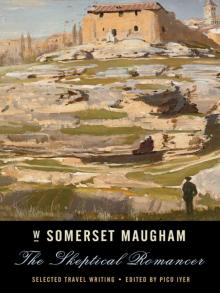 The Skeptical Romancer: Selected Travel Writing
The Skeptical Romancer: Selected Travel Writing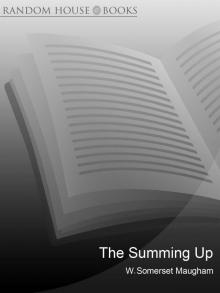 The Summing Up
The Summing Up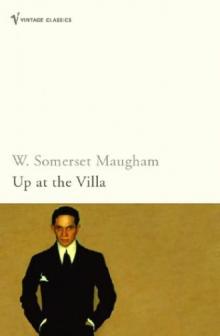 Up at the Villa
Up at the Villa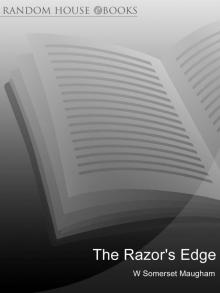 The Razor's Edge
The Razor's Edge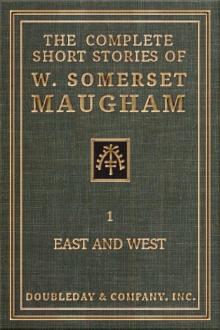 The Complete Short Stories of W. Somerset Maugham: East and West (Vol. 1 of 2))
The Complete Short Stories of W. Somerset Maugham: East and West (Vol. 1 of 2))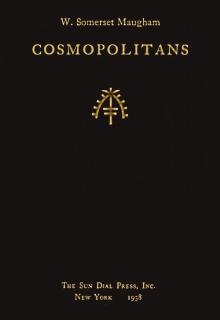 Cosmopolitans
Cosmopolitans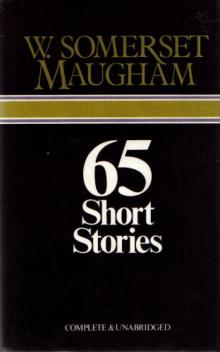 65 Short Stories
65 Short Stories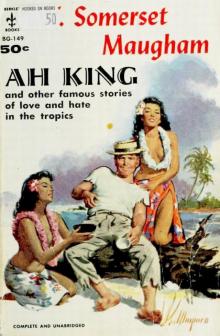 Ah King (Works of W. Somerset Maugham)
Ah King (Works of W. Somerset Maugham)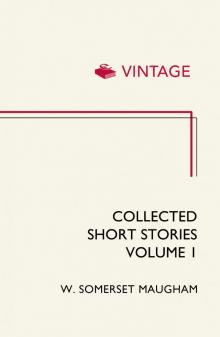 Collected Short Stories: Volume 1
Collected Short Stories: Volume 1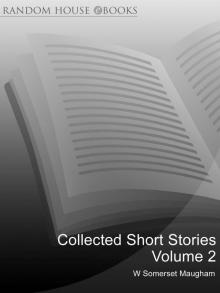 Collected Short Stories Volume 2
Collected Short Stories Volume 2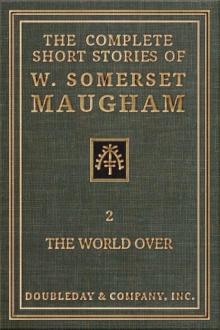 The Complete Short Stories of W. Somerset Maugham - II - The World Over
The Complete Short Stories of W. Somerset Maugham - II - The World Over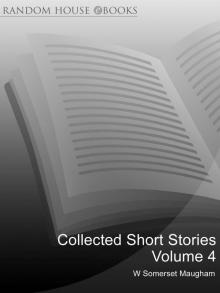 Collected Short Stories Volume 4
Collected Short Stories Volume 4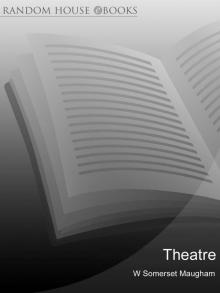 Theatre
Theatre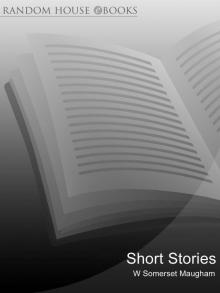 Short Stories
Short Stories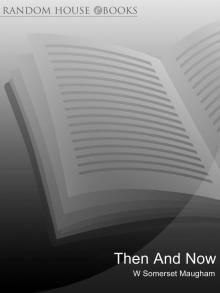 Then and Now
Then and Now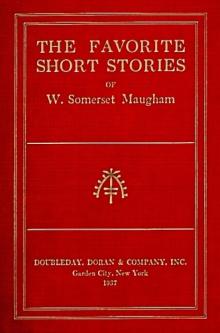 The Favorite Short Stories of W. Somerset Maugham
The Favorite Short Stories of W. Somerset Maugham Of Human Bondage
Of Human Bondage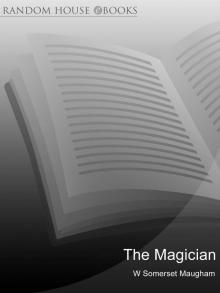 The Magician
The Magician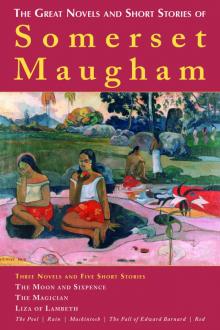 The Great Exotic Novels and Short Stories of Somerset Maugham
The Great Exotic Novels and Short Stories of Somerset Maugham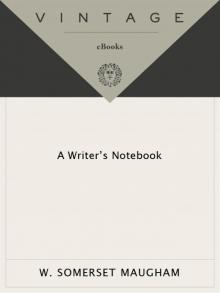 A Writer's Notebook
A Writer's Notebook Christmas Holiday
Christmas Holiday The Making of a Saint
The Making of a Saint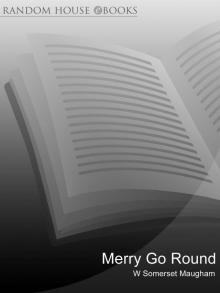 Merry Go Round
Merry Go Round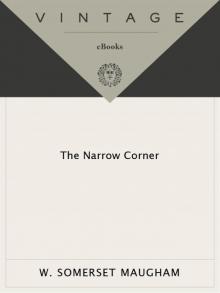 The Narrow Corner
The Narrow Corner Collected Short Stories Volume 3
Collected Short Stories Volume 3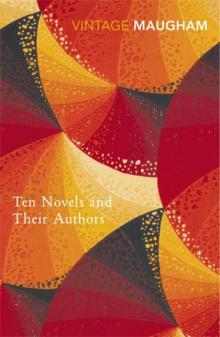 Ten Novels and Their Authors
Ten Novels and Their Authors Ashenden
Ashenden The Moon and Sixpence
The Moon and Sixpence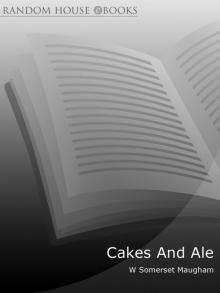 Cakes and Ale
Cakes and Ale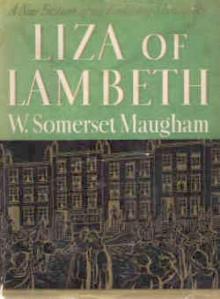 Liza of Lambeth
Liza of Lambeth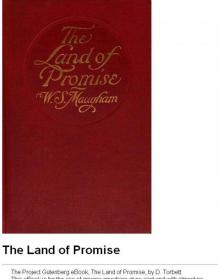 The Land of Promise: A Comedy in Four Acts (1922)
The Land of Promise: A Comedy in Four Acts (1922) A Writer's Notebook (Vintage International)
A Writer's Notebook (Vintage International)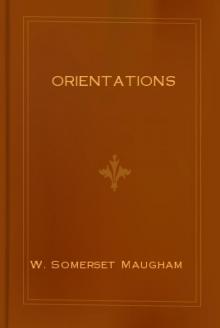 Orientations
Orientations Selected Masterpieces
Selected Masterpieces Mrs Craddock
Mrs Craddock The Skeptical Romancer
The Skeptical Romancer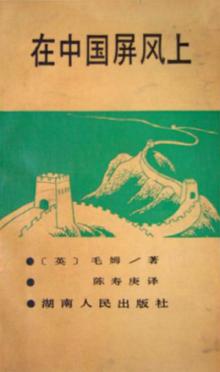 On a Chinese Screen
On a Chinese Screen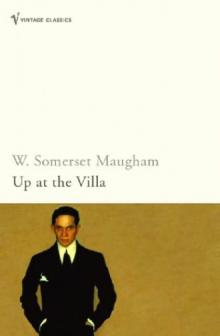 (1941) Up at the Villa
(1941) Up at the Villa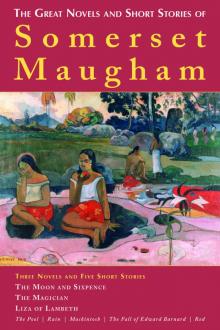 The Great Novels and Short Stories of Somerset Maugham
The Great Novels and Short Stories of Somerset Maugham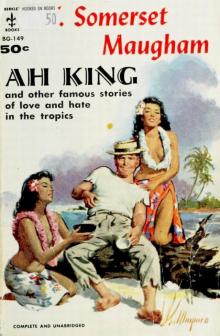 Ah King
Ah King The Explorer
The Explorer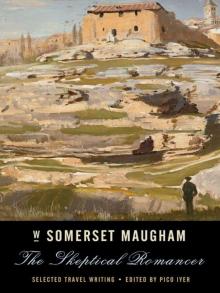 The Skeptical Romancer: Selected Travel Writing (Vintage Departures)
The Skeptical Romancer: Selected Travel Writing (Vintage Departures) The Complete Short Stories of W. Somerset Maugham - I - East and West
The Complete Short Stories of W. Somerset Maugham - I - East and West